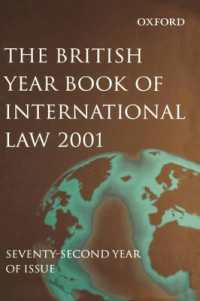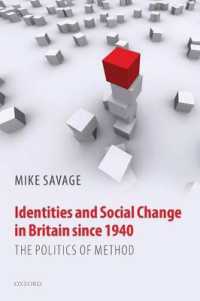Full Description
The essays in this book explore the history of ruins in multiple cultures and periods. Authors study ways in which ruins can be appropriated, foregrounded and re-semanticized for political purposes. The links between the materiality of monuments and global processes of ruination are seldom explored, as are the historicity of rubble and its museumification. Ruins are predicated on the interplay between presence and absence; they remind us of caducity while conjuring up the spectrum of the completeness that would negate them. They can awaken the eeriness of the disintegrating modern city and serve as a metaphor for institutional decay. But they can also underpin proposals of restoration through salvage and reuse of the rubble.
Contents
Introduction. Modernity in Ruins.
Chapter 1. Alain Schnapp. The Resistance of Ruins.
Chapter 2. Andreas Schönle. Contested and Detested Ruin: The Russianised Afterlife of the Church of the Tithe in Kyiv.
Chapter 3. Daniel Baric. A Tale of Two (Ruined) Cities: Salona (Croatia) and Doclea (Montenegro) in Socialist Yugoslavia and beyond.
Chapter 4. Jennifer Scappettone. From Colossus to Copper Particulates: Liberty Enlightening the World as Ruin.
Chapter 5. Gastón Gordillo. Rubble and Revolution: The Making of Worlds as Creative Destruction.
Chapter 6. Francesc Torres. Rubble, History and Time.
Chapter 7. Mercè Picornell. Use, Preservation and Emotional Mapping of Ruinous Objects: a Reading from the Perspective of Francesc Torres's La campana hermètica (The Hermetic Bell).
Chapter 8. Christoph Wulf. The Humboldt Forum in the Berlin Palace. Ruin of the Past - Place of the New.
Chapter 9. Pablo Arboleda. MacGuffin in Ruins: A More-Than-Representational Tale of Urban Exploration.
Chapter 10. Costica Bradatan. Amid the Living Ruins of the Cynic School.
Chapter 11. Joan Ramon Resina. The Ruins of the University.








